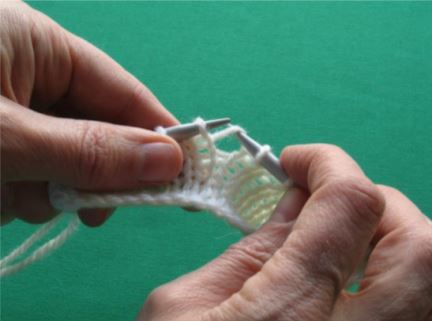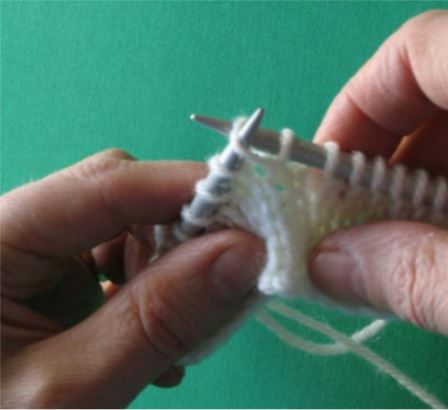There are two different ways to make an extra stitch while you are knitting, one (kfb) leaves a little bar on the front of the work, and the other (M1) is virtually invisible. In this post we will explain both knitting increasing techniques with text, images and videos.
Kfb (Knit into front and back)
Knit into the front of the stitch in the normal manner but don’t let the stitch slip off the left hand needle. Then knit that same stitch again through the back of the loop and then allow it to slip off. You will have two stitches on your right hand needle and have only used up one on the left hand needle. This will leave a small bar across the work where you worked into the back of the stitch. This makes it easy to count the increases up a piece of work.
This video demonstrates how to increase your knitting using kfb (knit into front and back of next stitch):
Here is another great video showing the KFB technique:
M1 (make one)
Patterns often call for you to make one when changing from a ribbed border to the main fabric of the garment. This increase is virtually invisible.
To make one, pick up the loop between the stitch you have reached and the one you have just knitted by inserting the point of the left hand needle under the loop from front to back. Place the loop on the left-hand needle and knit into the back of that loop to twist the stitch and fill the hole that has formed by picking up the loop. Here is the process shown in pictures. You can find a video below.



And here is a video demonstrating how to increase your knitting using kfb (knit into front and back of next stitch).
In this article, you can find an overview of all knitting decrease methods.
